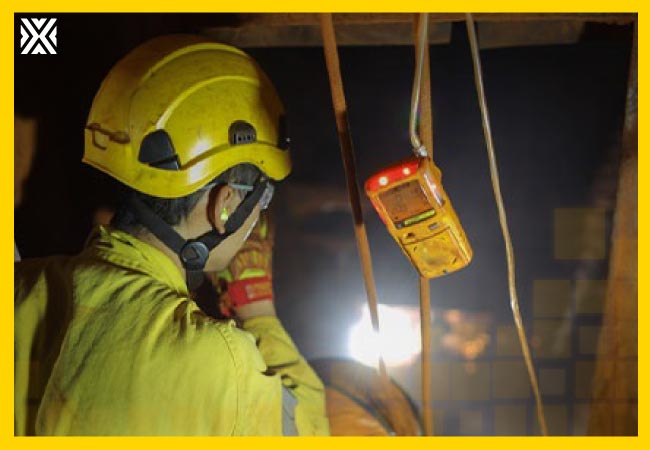Currency
January 16, 2022

Severe temperatures, poor ventilation, toxic gasses and extreme darkness – these are all common working conditions when operating in confined spaces. It’s understandable then that sound safety procedures and protocols are paramount to those hard-working professionals who count Confined Space Entry (CSE) among their everyday or even just occasional job responsibilities. By utilizing advanced monitoring technology, companies can see improved safety, increased productivity and reduced overall costs during confined space operations.
The risks of working in and around confined space areas are well-known. Conventional practices require a safety attendant to be in close proximity to observe workers entering and performing work within the space. Despite the presence of an attendant and well-documented procedures, however, injury and even death can still occur. A safer, more effective approach would be to monitor the confined space from a centralized location to avoid putting additional workers near the hazardous area.

During any CSE operation, a fully engineered monitoring system equipped with innovative technology can optimize the level of safety supervision in and around the confined space by allowing skilled professionals to remotely observe real-time video footage of work being conducted in the hazardous area. This ensures exponentially safer operations at a reduced cost.
To deliver optimal safety performance and meet OSHA standards, a robust monitoring system should also include gas detection, 24/7 video coverage, access control, two-way communications and alarms. Most importantly, the entire system must be monitored by highly qualified, highly trained professionals.
Most standard gas detection units are equipped with LEL, O2, H2S and CO monitors, but a variety of other sensor options are available for custom needs. Units are also equipped with a strong sampling pump so that drawing samples from a hazardous atmosphere with the gas detection unit can be simple and seamless. Ideally, the system should be wireless and flexible and include loud audible and visual alarms that can easily be seen or heard in any environment.
The risks of working in and around confined space areas are well-known. Conventional practices require a safety attendant to be in close proximity to observe workers entering and performing work within the space. Despite the presence of an attendant and well-documented procedures, however, injury and even death can still occur. A safer, more effective approach would be to monitor the confined space from a centralized location to avoid putting additional workers near the hazardous area.

During any CSE operation, a fully engineered monitoring system equipped with innovative technology can optimize the level of safety supervision in and around the confined space by allowing skilled professionals to remotely observe real-time video footage of work being conducted in the hazardous area. This ensures exponentially safer operations at a reduced cost.
To deliver optimal safety performance and meet OSHA standards, a robust monitoring system should also include gas detection, 24/7 video coverage, access control, two-way communications and alarms. Most importantly, the entire system must be monitored by highly qualified, highly trained professionals.
Gas Detection
Most standard gas detection units are equipped with LEL, O2, H2S and CO monitors, but a variety of other sensor options are available for custom needs. Units are also equipped with a strong sampling pump so that drawing samples from a hazardous atmosphere with the gas detection unit can be simple and seamless. Ideally, the system should be wireless and flexible and include loud audible and visual alarms that can easily be seen or heard in any environment.









